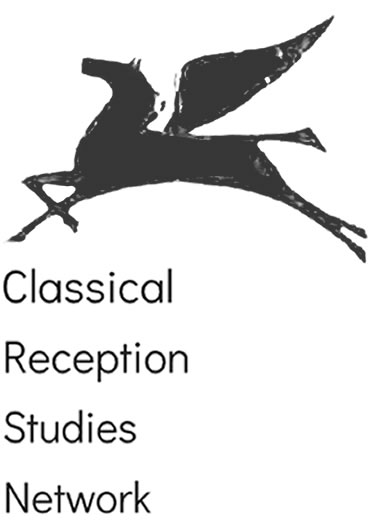
My Greek mythology Tour of Brighton, which took place on two Saturday mornings in May 2018, was inspired by a twentieth century painting and a medieval cottage. The painting is Judgement of Paris by Harry Morley in the Brighton Museum and Art Gallery. Painted in 1929, it features a louche-looking Paris in an Italianate setting, whose gaze is fixed on the blondest of three naked goddesses. Her face is hidden from the viewer and she has no attributes, but it is clear who she is, and that Paris has already made his choice. The medieval cottage is Bridge Cottage in Uckfield, East Sussex, less than twenty miles from Brighton. In 2017 I was asked to make a talk on Greek mythology at the recently opened cottage relevant to the local area. I therefore decided on a virtual Greek mythology tour of Brighton, and spent a day walking the streets and museums of Brighton looking for inspiration. The resulting talk was extremely well received, and so I decided that, funding permitting, I would offer an actual Greek mythology tour of Brighton as part of the Brighton Fringe Festival 2018.
The Classical Association kindly approved a small grant to cover the Brighton Fringe listing fee and other costs, and I chose twenty objects from around Brighton with links with Greek mythology, some more tentative than others! My original solo walk had been about ten miles in total, including the Brighton Museum and Art Gallery, the Booth Museum of Natural History and the Hove Museum, as well as the North Laine and Old Steine areas. This clearly was not practical for a walk with members of the public, and so I decided on a route including a bus ride, starting with the Brighton Museum and the Morley painting and ending at the Hove Museum with a trip in the museum lift including among other things a ceramic tile featuring a picture of the Parthenon.
Some of the objects I chose were beautiful, such as an enamelled vase with a swan by Jane Short, for the story of Leda; and some were surprising, such as the picture of a cow in walking boots on the sign outside the Vegetarian Shoes shop – which for me is a representation of Io travelling the world chased by a gadfly. Some objects benefited from further research, such as the scallop shell in front of a statue of an elderly Queen Victoria, like the scallop shell from Botticelli’s Birth of Venus. This can be linked to Victoria through a statue of Venus Anadyomene that she purchased for Prince Albert from the Stowe House sale in 1848, which now stands in a niche specially created for it at Osborne House on the Isle of Wight. To assist walkers on the tour I created a document for downloading to mobile devices with companion images, so that more well-known paintings and statues could be viewed side by side with the Brighton objects.

I walked the route myself and estimated that the tour would take about an hour and a half, which is the timing I included in the Brighton Fringe brochure. However, when I walked the route with my mum a couple of weeks before the Fringe, so that she could provide friendly feedback, I found that with questions and a coffee break the tour was more like two and a half hours: an hour and a half in the city centre plus another hour to take the bus and look at the objects in the Hove museum (although walkers could choose to finish in the town centre, which a few did, after finding the walking and standing a bit too much). I also had a moment of panic when I found that the Unitarian church, modelled by Amon Henry Wilds in 1820 on the Theseum in Athens, was completely covered in scaffolding for renovation. However, I decided to keep this in, advising walkers that we would ‘look at something that you can’t see’, showing a picture of the building and advising them to come back and look at it again when the scaffolding is removed.
 For my first tour I had fifteen walkers, and for the second twenty-two (having to turn two away as we were too many and officially fully booked at twenty). I obtained feedback for those with time to provide this at the end, and all walkers enjoyed the tour, some making suggestions for future tours. Most were residents of Brighton, who came along because they enjoyed going on tours and/or had an interest in ancient Greece and Greek mythology. There was an even split in terms of male and female participants, with three quarters giving their ages as 46-60 or over 60. I asked participants which object was their favourite and why. Participants chose a range of objects for many different reasons, whether this was because they liked the object, the story I associated with the object, or made links themselves, such as having learned about Aphrodite on a holiday to Cyprus. The cow and the story of Io was divisive, being both the most popular object and story with six votes, and leading to one participant drawing a picture of a cow on the feedback form, but another participant suggesting that I should ‘skip the cow’. The Judgement of Paris picture was the next most popular object, with four votes, as participants liked a new treatment of an old theme. This was followed by the mask on the door of Specs opticians with a face like that of the ‘Mask of Agamemnon’ discovered at Mycenae by Heinrich Schliemann, and the enamelled swan vase, each with three votes.
For my first tour I had fifteen walkers, and for the second twenty-two (having to turn two away as we were too many and officially fully booked at twenty). I obtained feedback for those with time to provide this at the end, and all walkers enjoyed the tour, some making suggestions for future tours. Most were residents of Brighton, who came along because they enjoyed going on tours and/or had an interest in ancient Greece and Greek mythology. There was an even split in terms of male and female participants, with three quarters giving their ages as 46-60 or over 60. I asked participants which object was their favourite and why. Participants chose a range of objects for many different reasons, whether this was because they liked the object, the story I associated with the object, or made links themselves, such as having learned about Aphrodite on a holiday to Cyprus. The cow and the story of Io was divisive, being both the most popular object and story with six votes, and leading to one participant drawing a picture of a cow on the feedback form, but another participant suggesting that I should ‘skip the cow’. The Judgement of Paris picture was the next most popular object, with four votes, as participants liked a new treatment of an old theme. This was followed by the mask on the door of Specs opticians with a face like that of the ‘Mask of Agamemnon’ discovered at Mycenae by Heinrich Schliemann, and the enamelled swan vase, each with three votes.
The tour took a lot of planning and preparation, but was great fun. Members of the public have an interest in Greek mythology and enjoy it being presented in unusual ways. And although initially we wouldn’t necessarily expect to find echoes of ancient Greece on the streets of Brighton, they are there if we look for them. I will certainly be offering the tour again, and would encourage colleagues to have a go at doing something similar in other cities.


Thank you for sharing this idea. On trips to New York I have seen “Greek” statues everywhere